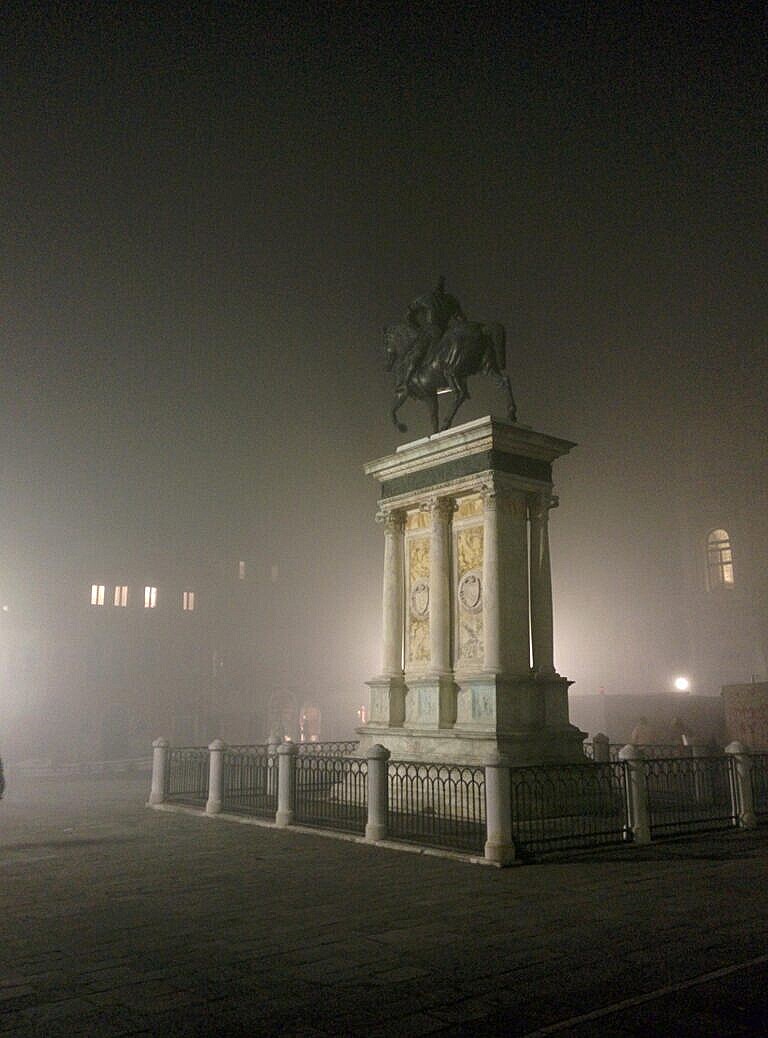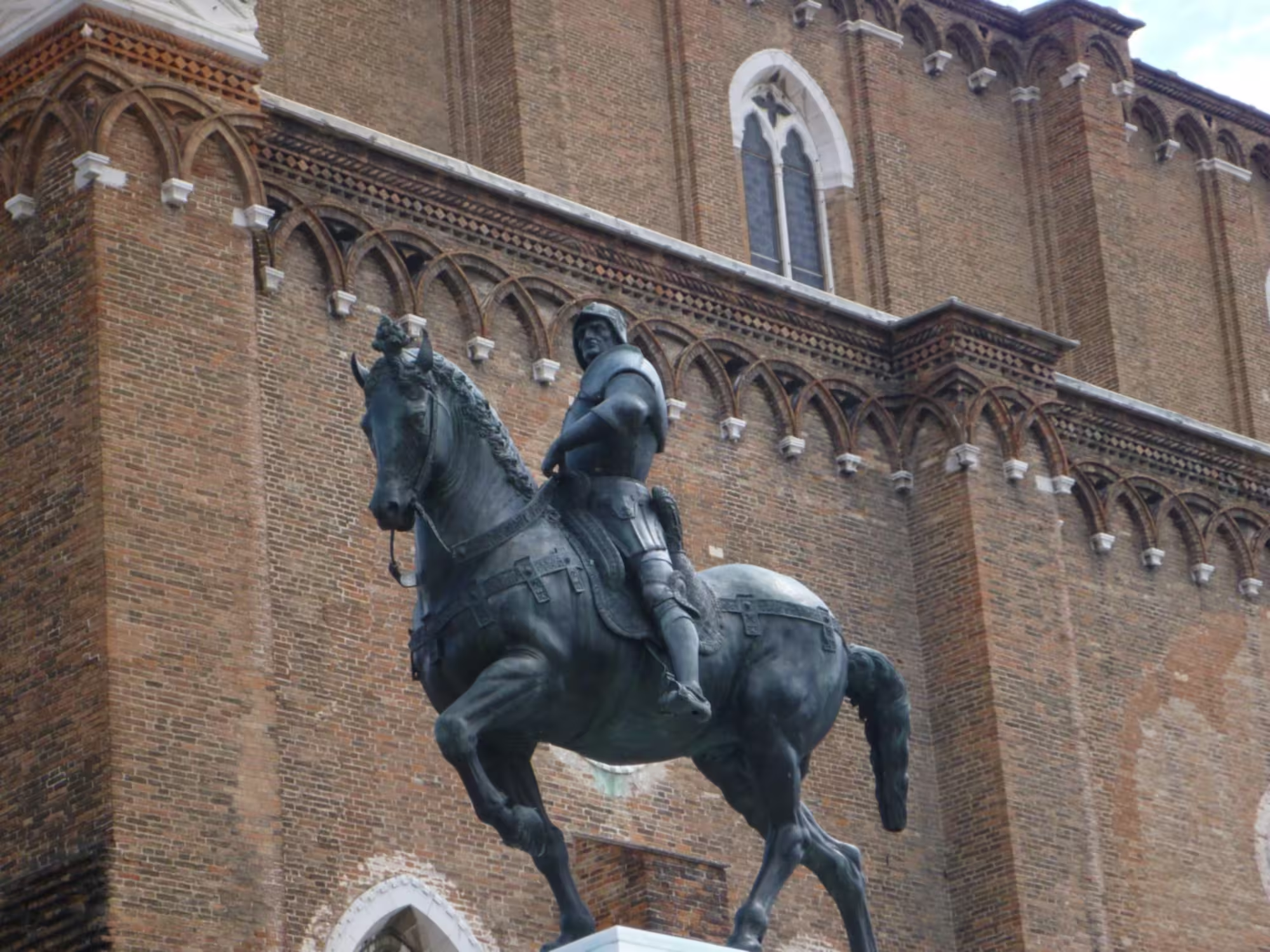Some of the hardest things to see are those which are absent. Yet, an absence can be just as significant as a presence. One such absence in Venice is the scarcity of statues to commemorate the great men of the Serenissima.
There are indeed very few statues in Venice, at least statues meant to celebrate the important persons of Venice.
From the time of the Republic of Venice there is only one (1) such statue in the city, that for Bartolomeo Colleoni in Campo SS Giovanni e Paolo, erected in 1496.
In over a thousand years, the Venetian Republic didn’t commemorate anybody else with a monument in the city.

Absurdly, Colleoni wasn’t even born Venetian.
Upper-class competition
The reason is most likely the continuos and ubiquitous infighting between the aristocratic families in the Consiglio Maggiore, and the fact that the head of state, the Doge, usually came from a different family at each election.
The result was that if anybody, in a position to do so, put up a statue of a family member in a public space, that statue was unlikely to stay up for long.
Power would shift to another faction within the upper class, and they would either take the statue down or replace it with somebody else.
As a result, we find a Piazza San Marco, the central square of the city and government quarter of the Republic of Venice, entirely without any kind of monuments to anybody.
Venice didn’t even reward the greatest of the doges or navy commanders with a statue.
The Republic of Venice didn’t do statues like that.
Public, private spaces
There were, however, statues of Venetian leaders on display around the city, but they were not erected or funded by the state, and they were not in the square or campi of the city.

In some cases, wealthy families funded new façades on churches, and used those façades to promote themselves.
One such example is still visible on the church of Santa Maria del Giglio (San Marco). Antonio Barbaro donated 30,000 ducats to redo the façade in the Baroque style (finished in 1680), and he turned it into a monument to himself and his family.
Another example was the church of Santa Giustina (Castello) where the Soranzo family funded a new Baroque façade in the 1640s. It was adorned with statues and mock funerary monuments to members of the same family. Parts of the decoration are still in situ, but the statues were looted and sold after the fall of Venice in 1797.
Funerary monuments
Venice never had a real cemetery in the time of the Serenissima.

Wealthy people paid for burial space inside the churches, and many aristocratic families sponsored churches and build chapels in them as family mausoleums.
Many major Venetian churches are therefore full of monuments to wealthy aristocrats. One such church is the Basilica de SS Giovanni e Paolo, another is the Santa Maria Gloriosa dei Frari, both full of grand funerary monuments.
The now demolished Sant’Antonio Abate stood in Castello where the Biennale is now. The only remaining part of the church is an arch, once the front of the Lando family chapel, which now stands in the open in the Giardini Pubblici.
Later statues
After the fall of the Venetian Republic, more statues appeared.
There are none surviving from the period of Austrian domination, but in the decades after the annexation of Venice to the Kingdom of Italy in 1866, at least six more statues appeared in various places around Venice.
Later, in the 1900s, a series of statues appeared in a circumscribed part of the Giardini Pubblici in Castello, where the Biennale is.
Venice is still a city with few statues.





Leave a Reply